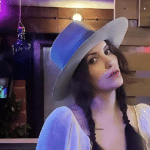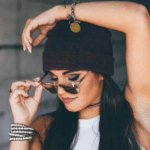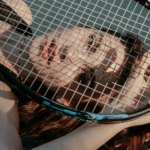When it comes to natural hair, protective hairstyles are a game-changer. Think braids, twists, locs – and countless variations within these styles. They’re not just about looking fabulous, but about offering protection from everyday wear and tear, the elements, and promoting healthy hair growth. But protective hairstyles offer more than practical benefits; they’re deeply rooted in culture, history, and self-expression.
The Benefits of Protective Hairstyles
When it comes to embracing the beauty of natural hair, minimizing manipulation is key. Protective styles offer a welcome break from the constant detangling, styling, and re-styling that can take a toll on our strands. By shielding your hair within braids, twists, or similar styles, you give it time to simply grow and thrive, free from excessive manipulation. Less brushing and combing translates to reduced breakage and fewer of those frustrating single-strand knots, leading to thicker, healthier hair overall.
Protective styles are your hair’s hydration hero. The ends of your hair, the oldest and often most vulnerable part, are tucked safely within the style. This helps prevent the moisture loss that’s so common when hair is exposed to the elements and constant styling. Keeping the ends protected promotes stronger hair that’s less prone to dryness and breakage.
For anyone dreaming of longer, fuller hair, protective styles can be your best friend. By minimizing breakage and creating a healthy environment for your hair, consistent use of protective styles can significantly boost your hair growth goals. Imagine stepping out of braids after a few weeks to discover noticeably longer, and importantly, healthier hair – an incredibly motivating outcome!
The world of protective hairstyles is a treasure trove of versatility, and braids are the crown jewels! Think of classics like box braids, where your hair is divided into neat squares. Or opt for a softer, more bohemian style with goddess braids that often incorporate curly extensions. Knotless braids are a popular choice for those desiring a gentler, tension-free alternative. Fulani braids, with their intricate patterns and iconic beads, weave cultural pride and artistic flair into your look.
If you crave textured styles, twists are the way to go. Senegalese twists offer sleek, rope-like strands that can be styled in countless ways. Havana twists boast a chunkier, more textured look, while passion twists combine the beauty of twists with springy curls. And if you love the twist aesthetic but aren’t ready to take the plunge into locs, there’s always twist-outs, a temporary but equally gorgeous option achieved by unraveling twists after they’ve set.
Locs (or dreadlocks) represent the ultimate protective style commitment, steeped in history and symbolism. Whether you choose traditional locs cultivated over time, the instant gratification of faux locs, or the ethereal beauty of goddess locs, this style is an investment with a long-lasting payoff. “Locs are a journey, not just a hairstyle,” notes a natural hair blogger, “They symbolize patience, growth, and embracing the unique beauty of your hair’s natural texture.”
Protective Hairstyle Maintenance
Protective styles aren’t “set it and forget it.” Here’s how to keep them looking their best:
-
Protect Your Edges: Avoid excessively tight styles, and use gentle tension when putting your hair up in ponytails or buns to avoid stressing your delicate hairline.
-
Cleanse Your Scalp: Keeping your scalp clean is vital! Use a diluted shampoo mixture specifically designed for protective styles to cleanse without disrupting the style itself.
-
Moisturize: Don’t neglect moisturizing your scalp and roots! Lightweight oils and leave-in conditioners applied to your scalp and the length of your hair (where accessible) provide necessary hydration.
-
Protective Nighttime Routine: Use satin scarves or pillowcases to reduce friction while you sleep, helping to prevent frizz and preserve your style.
Protective hairstyles have a deep-rooted history, particularly within the African diaspora. “Braids and other protective styles carry generational knowledge and connection to heritage across cultures,” explains a natural hair specialist. They represent artistry, community, and a celebration of the beauty and versatility of natural hair.
During times of slavery, braids served a practical and profound purpose. Maps for escape routes were woven intricately into cornrows, and seeds were hidden inside the braids, ensuring sustenance for those escaping to freedom. Today, protective hairstyles continue to be a powerful symbol of resilience, strength, and cultural pride.
Ultimately, protective hairstyles offer a combination of practicality, self-expression, and connection to a powerful legacy. Whether you choose braids adorned with beads, elegantly simple twists, or a crown of beautiful locs, there’s a protective hairstyle to suit your style and celebrate the beauty of your natural hair.









